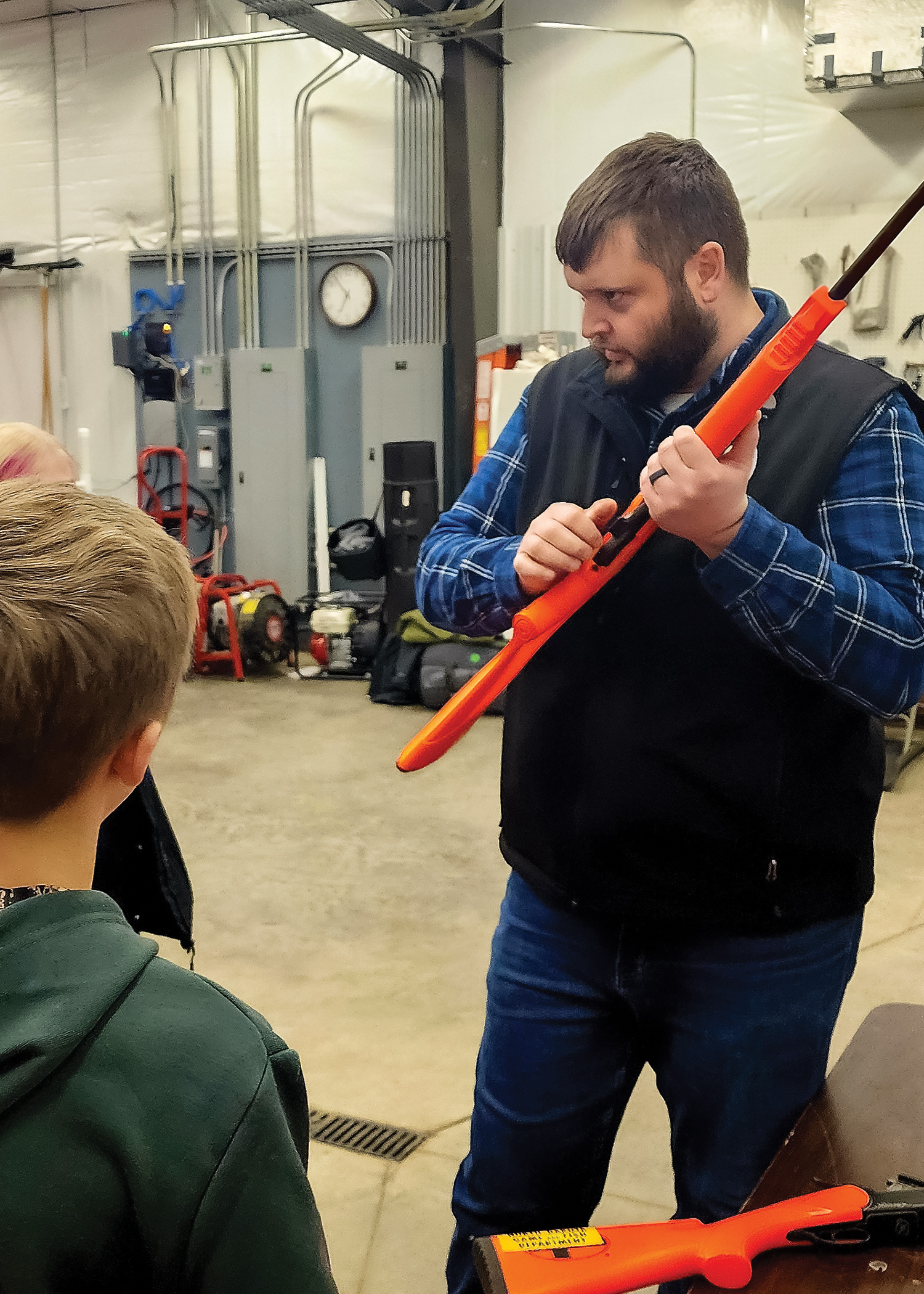Quarter Million Graduates and Counting
Editor

The North Dakota Game and Fish Department’s hunter education program, required of anyone born after Dec. 31, 1961, is on pace to hit 250,000 graduates sometime this spring.
This milestone is significant for a program that got its start in the state in 1979.
“Hitting a quarter million graduates is a testament to all our volunteers from Grand Forks to Bowman who teach hunter ed in their communities. And some of them have been teaching since the program’s inception,” said Brian Schaffer, Department hunter education coordinator. “It’s really quite the accomplishment in a state that doesn’t even have a million people living in it, that over the last 40 or so years we’ve taught over a quarter million hunter education students and made hunting safer, not just for hunters, but for everyone in North Dakota.”
Hunter education was developed in the 1950s in different parts of the country and implemented in North Dakota 40-plus years ago by state law, with the goal of reducing the number of accidents occurring in the field.
“Primarily in the 1950s, it was looking at reducing the number of fatalities that were occurring and it’s done a great job of doing that nationwide,” Schaffer said. “What we want people to take away from hunter ed is the basics of firearm safety.
“A lot of students are handling firearms for the first time in hunter education. Handling firearms safely isn’t something you learn in a classroom in 14 hours, it’s something you need to be dedicated to for your entire life,” he added. “It’s important for everyone to remember that hunter education and firearm safety is everyone’s responsibility. Sometimes that’s just a simple conversation with people we are hunting with or for you to think about it before you load your firearm and head into a field.”
While the primary focus of the program is firearm safety, whether that’s storing firearms in the home, transporting them in a vehicle or using them out in the field, students are also being introduced to wildlife conservation, landowner relations and basic safety in the field as a hunter.
The Game and Fish Department offers two options for fulfilling the hunter education requirement in North Dakota.
“The first option is what the majority of people have taken over the last 40-plus years and that’s the traditional course, which is 14 hours of in-person learning. The number of days can vary, but the total is 14 hours of instruction with some of our volunteer instructors,” Schaffer said. “The other option, which is gaining popularity just due to busier lives and busier schedules, is our home study option, which still requires two meetings in person, the first night and the last night.
“The first night we go over North Dakota specific information, and then it’s heavily focused on firearm handling and how to be safe in the field with firearms,” he added. “And then you go home, and you have two weeks to complete the online material at your pace. Then you come back on the last night of class, and you are required to take and pass the same written and practical exam as a traditional class student.”
One of the biggest hurdles for students is simply finding a hunter education course to fit their schedules. Understanding that, now is the time to find a course near you.
“With our hunting season wrapped up, people aren’t really thinking about the next hunting season, but with hunter education, the vast majority of our classes are taught from about the middle of January through June,” Schaffer said. “That was historically the case just due to everyone being in the deer lottery in June. While we started teaching a few other courses, trying to get courses developed throughout summer, the vast majority still occur during the winter months here in North Dakota. If you used the apprentice option last year or you’re in need of hunter education, now would be the time to start looking.”
Schaffer said some of North Dakota’s smaller communities offer just one to two courses per year. And in the larger cities, like Bismarck, Grand Forks and Fargo, hunter education courses can fill up quick.
“It’s important to get into those classes the earlier the better if it fits your schedule,” he said. “But just because you don’t get into that first one in some of our larger locations, that doesn’t mean there’s not going to be more courses available throughout the year. The online course listing only shows current courses that are available, and we don’t list those courses more than two to three weeks out … so keep an eye out.”
The Game and Fish Department’s hunter education program has long been driven by dedicated volunteers across the state. Some, as Schaffer mentioned, have taught young (and old) would-be hunters for 40-plus years, while others are pretty new to the fold. Yet, like the sometimes-difficult task of finding a class that fits the student’s schedule, luring new volunteers into the mix can be challenging.
“We’re always looking for people with a passion for sharing our knowledge, educating students and fostering North Dakota’s long and storied hunting heritage,” Schaffer said. “And it’s not just teaching a 14-hour course in your community. If you just want to be involved a little bit and, say, help out on test night in your community, just give us a call and we can start that process. There’s a way to get involved in your community and we certainly appreciate any help we can get.”
